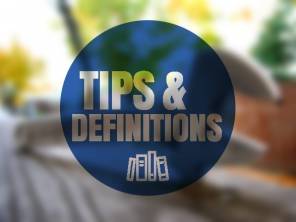A water softener works by stripping “hard” water of minerals such as calcium and magnesium and replacing those minerals with sodium or potassium.
In other words, a water softener turns hard water soft.
In this article, we’ll explain:
- What hard water is (and why many homeowners prefer soft water)
- How a water softener turns hard water into soft water
Know what hard water is and just want to know how a water softener works? Skip to the “how it works” section.
Hard water vs. soft water
Hard water is water that has a high amount of minerals (mostly calcium and magnesium) dissolved in it. Water naturally picks up these minerals as it travels along limestone and other rocks.
Not all homeowners have to deal with hard water, though. It really just depends on your geographical area. For example, Arizona has particularly hard water (as seen in the water hardness map below).

Arizona, colored in red, has very hard water.
In fact, the 2016 Phoenix Water Quality Report, stated that Phoenix’s tap water has 12 to 18 grains of “hardness” per gallon of water. And according to the Water Quality Association, anything over 10 grains/gallon is considered “very hard” water.
Okay, so Phoenix has very hard water. But why is hard water so “bad”?
Well, to be fair, hard water isn’t harmful to your health. In fact, consuming water that’s high in mineral content can actually have some health benefits.
But hard water can wreak havoc on your:
- Plumbing
- Water appliances
- Clothes
- Dishes
You see, all those minerals in the water precipitate as “limescale”- a thick, scaly white substance. And once limescale collects and hardens on a surface, it’s incredibly hard to remove.
A faucet aerator covered in limescale.
And because hard water causes various plumbing problems, many homeowners opt to install a water softener to turn their home’s hard water into soft water.
Let’s look at how at how water softeners do that…
How water softeners turn your hard water soft
Step 1: Ion exchange
During the “ion exchange”, your water softener strips your home’s water of calcium and magnesium ions and replaces them with sodium ions.
Here’s a deeper look into the ion exchange process:
Hard water from your home’s water supply enters a media or resin tank. This tank is full of tiny resin beads. Think of these beads as magnets that attract ions with an opposite charge.
- Resin beads (filled with sodium ions)- negatively charged
- Calcium and magnesium ions- positively charged
As hard water pours into the resin tank, the positively charged calcium and magnesium ions cling to the negatively charged resin beads. As more positive ions cling to the beads, the negatively charged sodium or potassium ions are bumped off the beads and enter the water.
Bottom line: calcium and magnesium ions are taken out of the water and sodium ions enter the water.
Step 2: Recharging
Over time, those resin beads become saturated with positively charged calcium and magnesium ions. And when this happens, the beads stop stripping your water of those “hard” minerals.
So those beads need to be “recharged” or cleansed of the negatively charged ions that are clinging to them.
Here’s a deeper look into the recharging process:
A second tank, called a brine tank is full of a salt or potassium solution (water full of sodium or potassium ions a.k.a “brine”). Once the water softener systems begins the recharging process (often called a “regenerating cycle”), that brine solution is dumped into the media tank. The sheer volume of the brine ions kick all the calcium and magnesium ions off the resin beads.
At the end of the cycle, the resin beads are full of sodium ions once again and the salt water solution is flushed from the media tank.
Step 3: Repeat
Once the resin beads are full of sodium ions, they’re ready to continue softening your home’s hard water.
Keep in mind that water softeners are not made to filter out chlorine from your water. A water softener will inevitably remove a small amount of chlorine from your home’s water but ultimately at the cost of a shorter life of the media or resin in the softener.
To prevent chlorine from shortening the life of your water softener, you may want to consider having a whole-house water filter installed (these filters are designed specifically to remove chlorine and other impurities in your home’s water).
Have water softener questions? Ask an AZ plumber
If you’re interested in investing in a water softener for your Arizona home, we can help. If you’re having trouble with your water softener, we can repair it too.
Just contact us for all your water softener needs.

